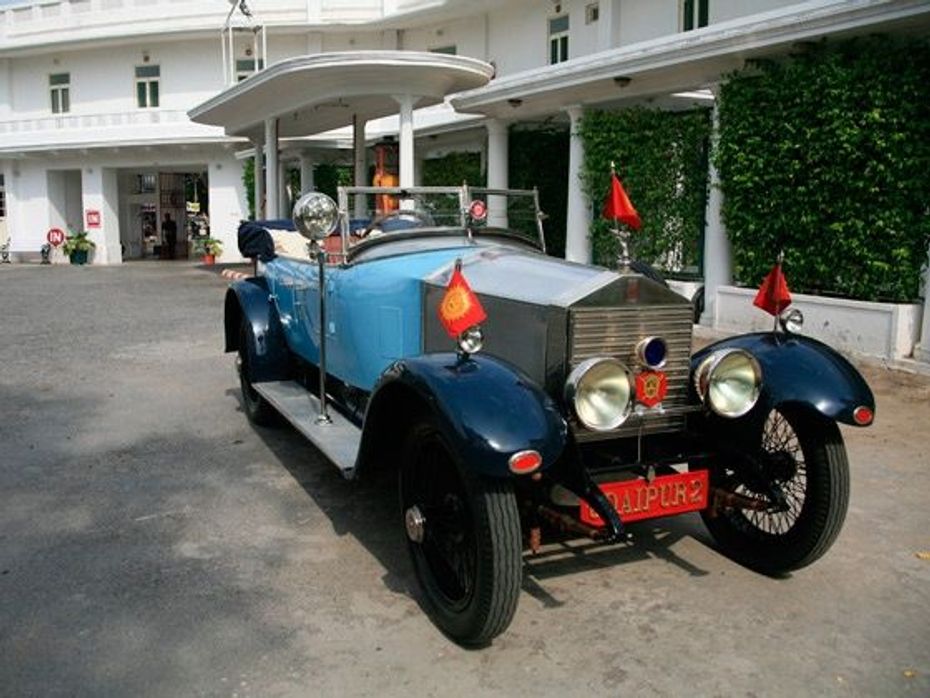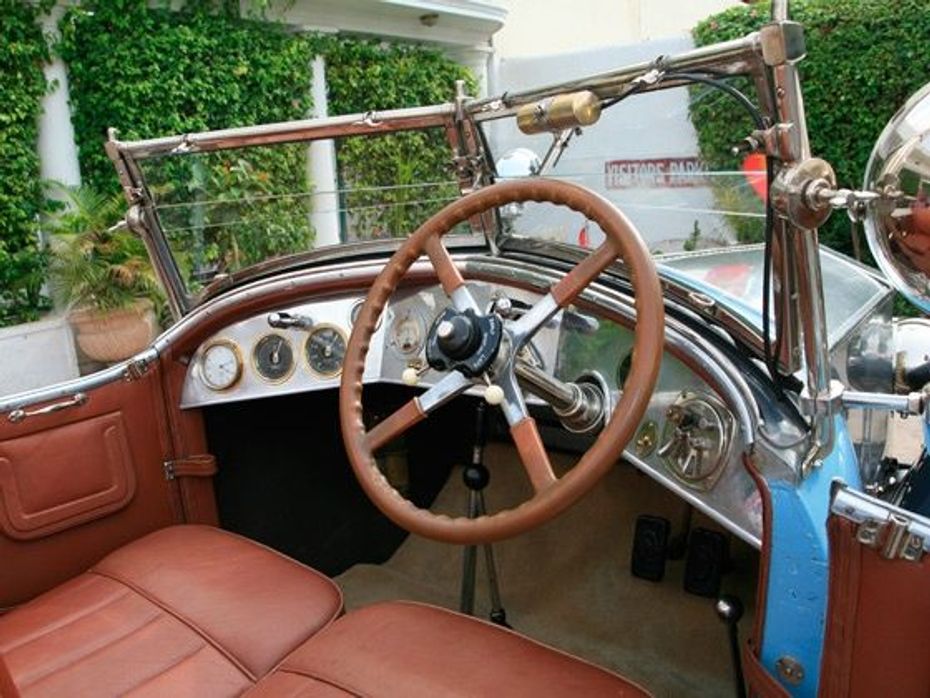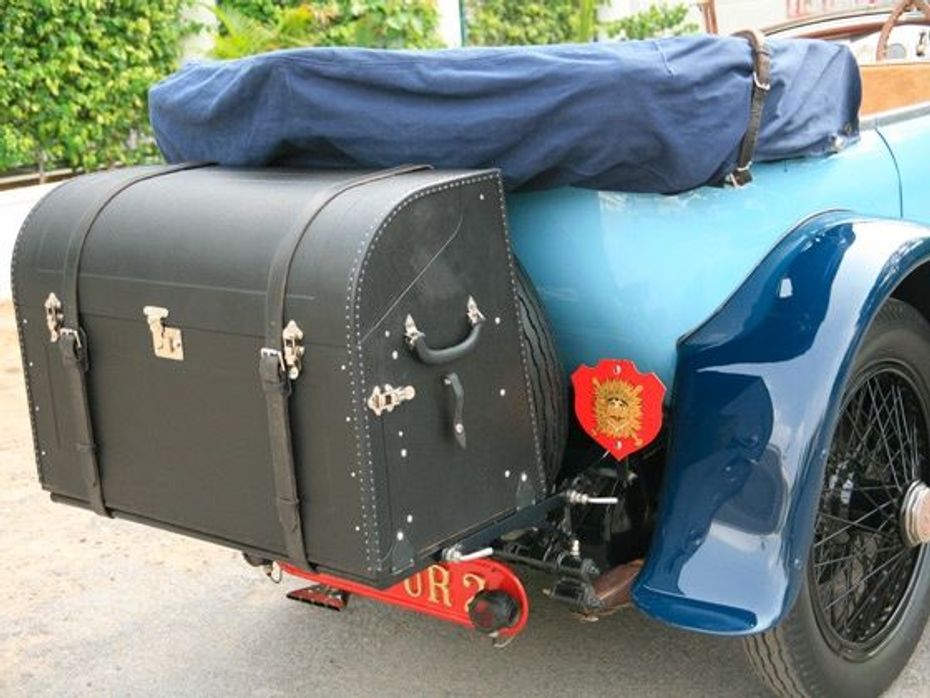
Rolls-Royce Series II to be launched on November 7
- Aug 7, 2014
- Views : 10585


From a car bought to be cannibalised for spares to keep other Rolls-Royce 20 H.P.s motoring in the Udaipur royal garage to its glorious resurrection to not just pride of place in the same fleet but also as the flag bearer of great Indian royal automobiles at the Pebble Beach Concours d’Elegance, is a story right out of a fable. Adil Jal Darukhanawala sheds light on GLK 21, the 1924 Rolls-Royce Twenty, originally ordered and owned by the Maharaja of Jodhpur and since the late 1930s doing duty in the automobile fleet of the Maharaja of Udaipur
Indian royalty loved their motor cars. And of course their other worldly possessions but then this was a matter of course because they had so much of it that not having one or two baubles wouldn’t have dented their financial standing. However, honour was of even greater import than mere money and it was also the pride of being seen in the grandest at all times which saw so many royals (Maharajas, Rajas, Thakur Sahibs, Nawabs, etc, etc) take to the automobile with such gusto as they would have done so with horses and elephants in the century before the advent of the internal combustion powered vehicles.
One has heard many a tale of our royals buying exotic cars by the dozen for the simple reason that the impression thus created was massive on the minds! Not just on their subjects but also on their peers and compatriots! This latter aspect was one which more often than not had many a raja ranged against a maharaja (and vice versa) in competition for the most powerful automobile just as they would have fought for the hand of princess in earlier times. That buying many units of the same model in one go was because they could afford them to show off and not because of there being a wholesale price charged for the purchase! Woe betide anyone was it to be known that some motor manufacturer had offered a discount and a royal had accepted!

However, among the over 278 Indian royals classified at the time of Independence, we also saw quite a few of them who were genuine motoring enthusiasts and who had great taste, be it displayed in the marque they chose, the coachwork they specified or the special one-offs they commissioned. So many of the greatest automotive names in existence at that time made special cars for our royals and while many did acknowledge that they had to have at least a couple of Rolls-Royces for official duties, this didn’t prevent them from investing in Lanchesters, Daimlers, Hispano-Suizas, Isotta-Fraschinis, OMs, Mercedes-Benz, Delages, Delahayes, Minervas, Cadillacs, Duesenbergs, et al.
In fact motoring history is the richer because of our royals and their penchant for great and grand cars and on August 19 this year, one would get a glimpse of some of these magnificent machines which our Maharajas drove and rode in their heyday when these beauties roll down on the famed 18th fairway of the Pebble Beach golf course for the 62nd Concours d’Elegance.
And of the eclectic (Maharaja Cars to enter 2012 Pebble Beach Concours d'Elegance) lot at Pebble this year would be the car splashed across these pages and a few overleaf, the 1924 Rolls-Royce 20 H.P. entered by His Highness Shri Arvind Singhji Mewar of Udaipur. While many would question the stature of a mere Twenty against the likes of a Phantom II or III this car and its entry is without a doubt one of the most significant for Pebble Beach in its history. It would be the first time that a Maharaja car would be driven on the hallowed greens with its Maharaja owner riding shotgun! In fact, this car will also do the 17-mile Tour d’Elegance on August 16, running through scenic vistas as the route winds through mountains and valleys along the California coast with a mid-way halt at Carmel-by-the-Sea.

For a car that is near 90 years old, and maintained and restored in India to take in such a drive would be a wonderful occasion! For the record, driving duties on the Tour d’Elegance would be handled by my close friend and fellow automobile journo Bob Rupani and Graham Ashley-Carter who played a major role in the restoration of this car. Shreeji would be joined by his daughter Princess Padmaja Kumariji Mewar and his son-in-law Rajkumar Sahib Dr Kush Singhji Parmar of Santrampur on this 17-mile run.
While this is an interesting scenario waiting to be played out, let’s take in the car and its history. We begin with the Rolls-Royce angle to the 20 H.P., this being a car developed in the years immediately after the First World War when the 40/50 H.P. Silver Ghost was the only model in the Rolls-Royce portfolio. This was a large and very powerful car more often than not being the preserve of the wealthy and therefore often used as a chauffeur-driven machine. The Rolls-Royce board worked out that a smaller 20 H.P. car be developed (code named Goshawk) which could cater to the owner-driver set and also be manufactured and sold at a price lesser than the Silver Ghost.

Around the period 1917-19, Sir Henry Royce was clear that while engine downsizing had to be embraced, it was not to be at the cost of performance. And for inspiration to that effect he looked at some of the Grand Prix cars from Peugeot and Mercedes which had done well in the French GPs of 1912,’13 and ’14. In fact, he purchased the 1913 French GP winning Peugeot which featured a 5.6-litre engine with gear-driven overhead camshafts operating four valves per cylinder to learn more about getting the desired performance from a smaller engine.
If that was not all, he also got to check out the 1914 French GP winning Mercedes of Christian Lautenschlager which came into his hands for some time and it proved valuable not just during the design and development of Project Goshawk but also during the Eagle development programme where RR explored the possibility of using sohc and dohc actuated valve gear on its six-cylinder 40/50 H.P. motors which were all pushrod operated.

Given the fact that production engineering machinery was not of a high order then, and to maintain the silent operation associated with the Rolls-Royce creed, it was decided to go with pushrod actuation for the 20 H.P. engine. This unit featured a 3127cc six-cylinder in-line having a single cylinder block and a detachable cylinder head for the first time in RR history. The crankcase was in aluminium alloy and it featured coil ignition to begin with, a stand-by magneto being an option at launch in 1922 before magneto ignition became standard fitment from 1923 onwards. The 20 H.P. came with a three-speed manual gearbox at launch with a centre gear change but with the adoption of a four-speed manual from 1925 onwards, the gear shift lever was positioned to the right, next to the driver’s foot. Early cars featured brakes only on the rear wheels but from 1925 all four wheels had servo-assisted brakes.
This 20 H.P., more popularly known within the RR fraternity as the “Small Horsepower” range met with immediate acceptance and Rolls-Royce made close to 3000 units in the period from 1922 to 1929 and of these quite a number came to India as well. The Twenty (as the car was popularly known) could be recognised from its larger and bigger engined Silver Ghost elder sibling, by the use of horizontally arranged shutters on its radiators. In fact, the last series close to 1928-29 featured vertical shutters.
The Twenty was clothed in very many types of bodies by some of the best known coach builders of the day including Hoopers, H J Mulliner, Weymann, Thrupp & Maberley, Windovers, Cockshoot, Mann Egerton, etc but the one coachbuilder which clothed the majority of the Twentys, both in England and those which came to India was Barker. Its barrel shaped tourer was the most popular but other regular touring bodies and cabriolets plus very nifty doctor’s coupes were also seen in India.

Moving now on to the Indian provenance of the car we have here on these pages. This car was one of three RR Twentys ordered brand new by the Maharaja of Jodhpur in 1923. Two of these were delivered in 1923 (chassis numbers GH 73 and GRK 69) while the third (GLK 21) was delivered in 1924. It is the latter which as used extensively by the Jodhpur royals before it was sold off to one of the most reputed car dealers in Jodhpur in the early 1930s – Seth Shri Motilal Sanghi. Shift from Jodhpur to Udaipur and this royal house also was in love with not just the Twenty but also with others from the RR stable.
It started with a 1914 Silver Ghost (chassis number 64 AB) which is yet in their possession and then it added no less than four Twentys to the royal garage. Three of these were ordered directly from RR in 1923 (chassis numbers 42 GO, 64 H9 and GAK 43) while a fourth (66 H9) formerly owned by the Nawab Moin ud-din Dowla was later added to the fleet. Maharaja Bhupal Singh was so fascinated by the Twenty that despite suffering from a physical deficiency, he prevailed upon Rolls-Royce to create a Twenty with special hand controls (throttle and clutch) for him to be able to drive. This was done on 64 H9 and this car remains to this day in the country, being part of the Orissa-based Patnaik collection.
It so transpired that in the 1930s, the Udaipur royal garage began to feel the pinch as regards a lack of spare parts for the Twentys and so the decision was taken to acquire another similar car which could be a mother lode of spares for those already in use. The Jodhpur Twenty was proferred by Seth Sanghi and thus the GLK 21 was bought for spares for the Udaipur garage. When 42 GO needed urgent engine work, GLK 21’s engine was taken out and fitted into this chassis while the former’s mill was stored and kept. This made GLK 21 a non-runner and she sat thus for a long time. In the meantime, 42 GO was sold off and is now in England while 66 H9 is in the Delhi-based Sudhir Choudherie collection. Not much is known about the whereabouts of GAK 43 and we would love to hear of it from any one of our readers.

In the late 1980s, the Udaipur Palace garage began to take stock of all what it had and the decision was taken to make the engine from 42 GO operational and fitted into GLK 21 which was virtually intact. Enter Graham Ashley-Carter who was roped in not just for his expertise but also for his enthusiasm and the damaged engine was resurrected and brought back to life. The entire car also got a complete makeover here in Udaipur itself and since the last few years it has been motoring on its own power in probably the best state of tune since she left the Rolls-Royce works in Derby, England. Credit Annu Vikram Singh, the curator of the Udaipur collection for this feat and also of course Ashley-Carter.
This Twenty as you can make out from Kunal Khadse’s exquisite photography has a very distinctive all-aluminium sports tourer coachwork by Barker and comes with that rakish split vee-windscreen. Also the striking interplay of painted and polished surfaces makes it stand out so very differently from other Twentys in this country. It is a fantastic car and has all the original details intact including the original instrumentation plus the de rigeur ornamentation from the royal Udaipur family clearly evident. It is a gorgeous dowager in all its period originality and for sure with Shreeji on hand it will make for the most eclectic owner-car combination at Pebble Beach this year.

Rolls-Royce Series II to be launched on November 7

Bespoke demand helps Rolls-Royce profit margins

Rolls Royce Ghost V-Specification launched at Rs 4.66 crore

Rolls-Royce unveils wedding edition cars in India

Rolls-Royce to open fourth dealership in India

More Rolls-Royce Ghost clients turn to bespoke in 2011

Rolls-Royce Presents Exclusive Year of The Dragon Collection

Rolls-Royce Silver Ghost : The Charkhari Alpine Eagle!

Rolls-Royce Ghost Launched!
 Royal Enfield Classic 350
Royal Enfield Classic 350
 Mahindra Scorpio N
Mahindra Scorpio N
 Toyota Fortuner
Toyota Fortuner
 Yamaha MT 15 V2.0
Yamaha MT 15 V2.0
 Hyundai Creta
Hyundai Creta
India's largest automotive community
 Mahindra XUV700
Rs. 13.99 Lakh
Mahindra XUV700
Rs. 13.99 Lakh
 Maruti FRONX
Rs. 7.51 Lakh
Maruti FRONX
Rs. 7.51 Lakh
 Maruti Grand Vitara
Rs. 10.99 Lakh
Maruti Grand Vitara
Rs. 10.99 Lakh
 Mahindra Scorpio
Rs. 13.61 Lakh
Mahindra Scorpio
Rs. 13.61 Lakh
 Mahindra Thar
Rs. 11.34 Lakh
Mahindra Thar
Rs. 11.34 Lakh